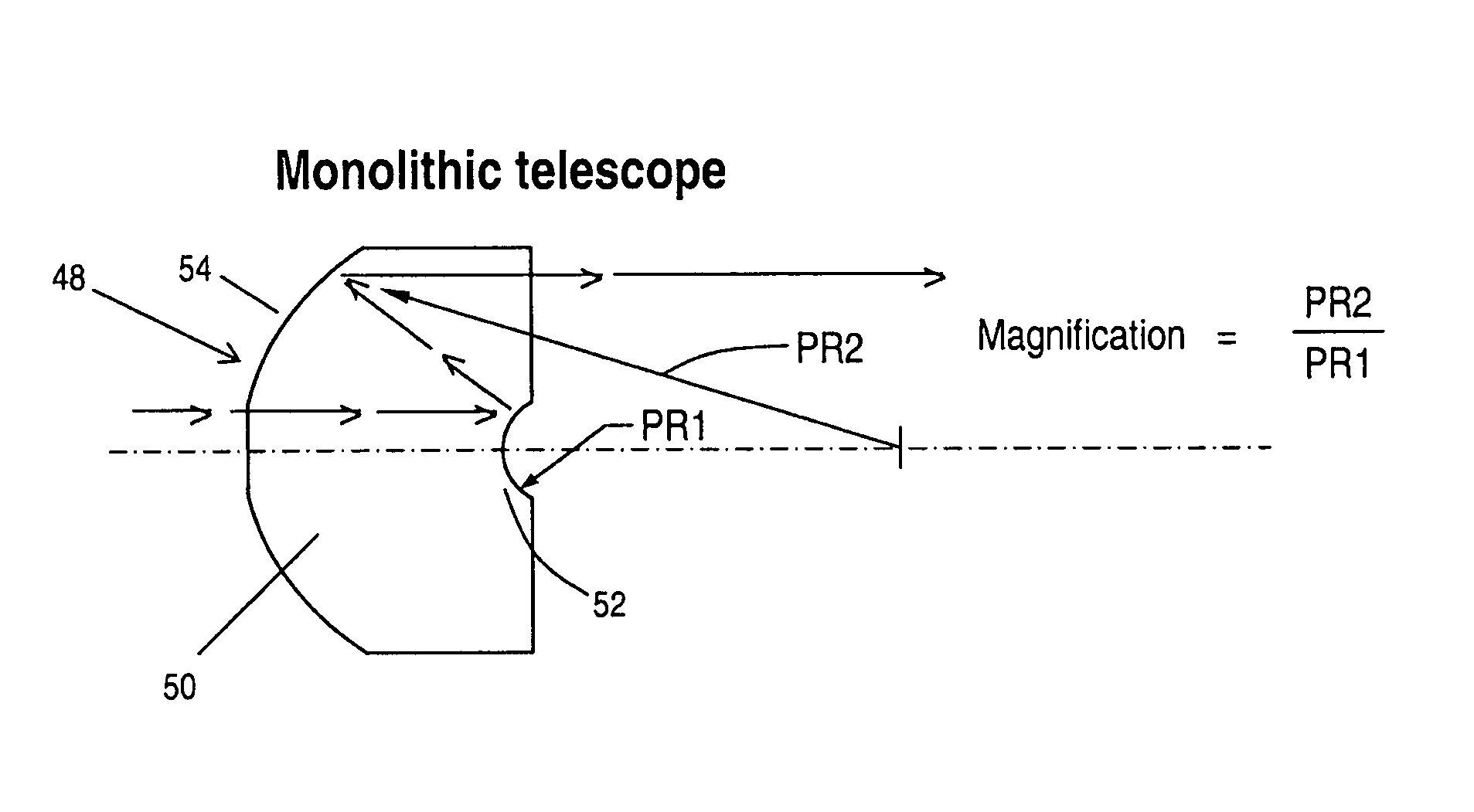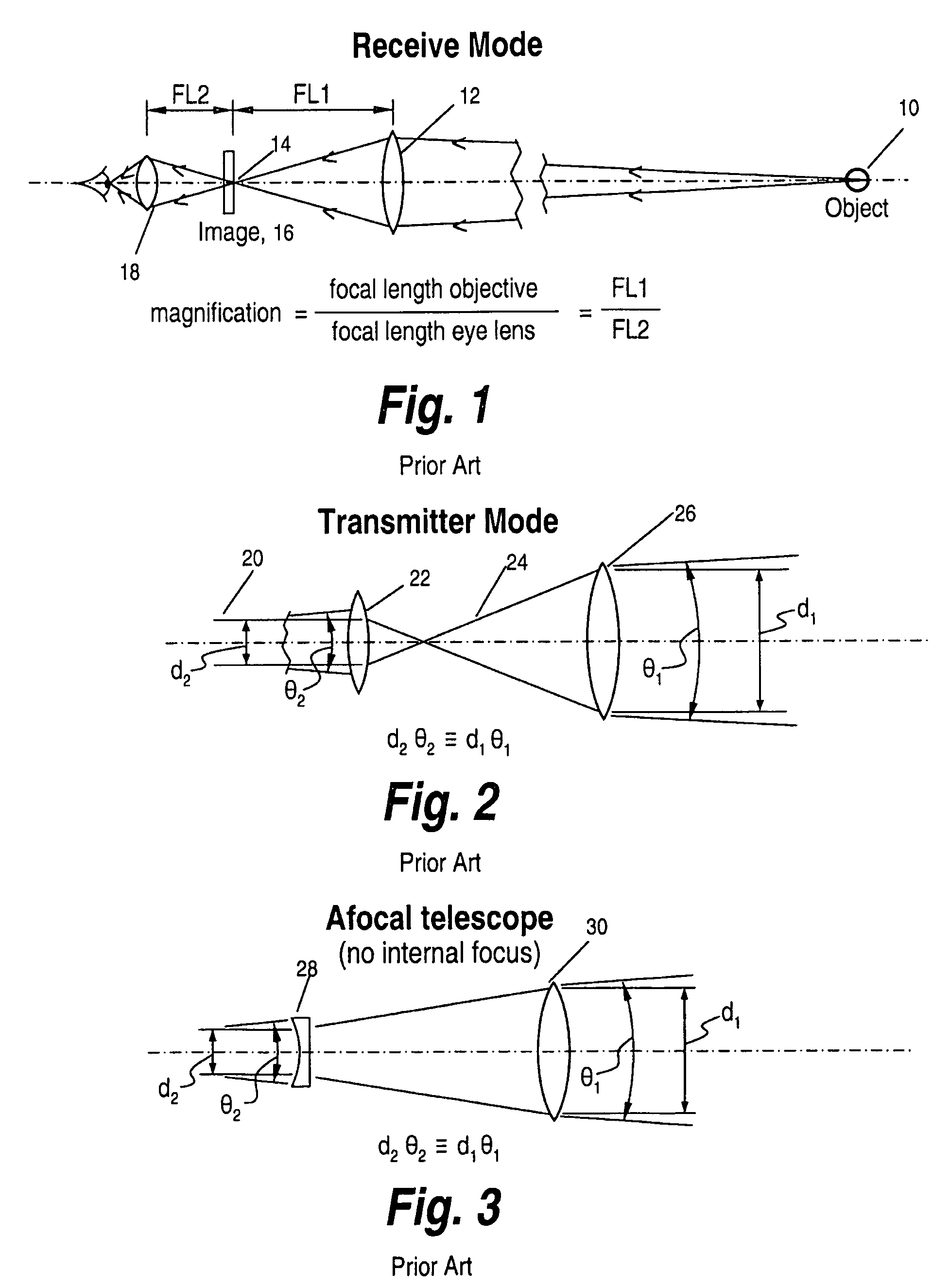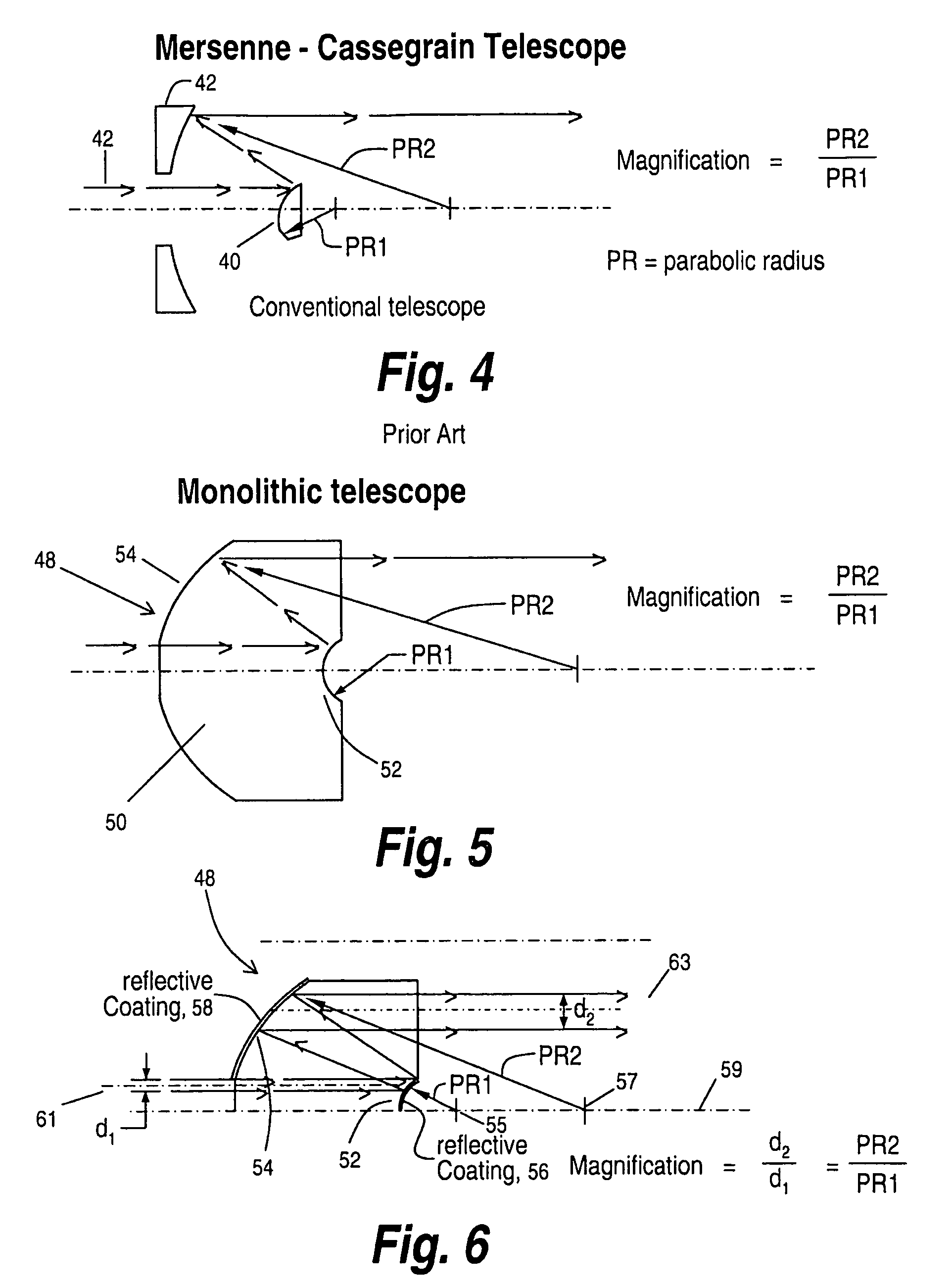Monolithic eccentric Mersenne-Cassegrain telescope
a telescope and monolithic technology, applied in the field of compact single element monolithic eccentric mersennecassegrain telescope, can solve the problems of affecting the stability of the telescope, affecting the performance of the telescope,
- Summary
- Abstract
- Description
- Claims
- Application Information
AI Technical Summary
Benefits of technology
Problems solved by technology
Method used
Image
Examples
Embodiment Construction
[0038]Referring now to FIG. 1, the conventional definition of a telescope is an optical instrument for enlarging the image of a distant object. Here it can be seen that an object 10 is viewed by an objective lens 12 which focuses the object to a focal point 14 to provide an image 16 of the object. Image 16 is viewed by an eye lens 18 such that when the image is viewed, the magnification is the focal length of the objective lens divided by the focal length of the eye lens. As will be appreciated, FIG. 1 shows a conventional telescope operated in a receive mode.
[0039]However, the telescope can also be used to compress a projected beam 20 in a transmit mode. In this case a primary optic or lens 22 is used to expand the incoming beam as illustrated at 24 so as to impinge on a secondary optic or lens 26 which expands and collimates the beam.
[0040]The diameter of the incoming beam is shown at d2 having a included angle of θ2, whereas the output beam has a diameter d1 with the beam subtend...
PUM
 Login to View More
Login to View More Abstract
Description
Claims
Application Information
 Login to View More
Login to View More - R&D
- Intellectual Property
- Life Sciences
- Materials
- Tech Scout
- Unparalleled Data Quality
- Higher Quality Content
- 60% Fewer Hallucinations
Browse by: Latest US Patents, China's latest patents, Technical Efficacy Thesaurus, Application Domain, Technology Topic, Popular Technical Reports.
© 2025 PatSnap. All rights reserved.Legal|Privacy policy|Modern Slavery Act Transparency Statement|Sitemap|About US| Contact US: help@patsnap.com



